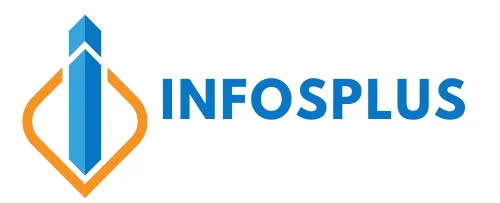In today’s competitive market, businesses must align their human resources to meet strategic goals effectively. Workforce planning is an essential component in this endeavor. This structured process helps businesses anticipate future workforce needs, ensuring that they have the right people with the right skills, in the right roles, at the right time. When done effectively, workforce planning aligns the workforce with organizational goals, reduces labor costs, and boosts productivity.
This article delves into the key concepts, strategies, and benefits of workforce planning, as well as actionable steps to build a robust workforce planning strategy that aligns with organizational growth.
What is Workforce Planning?
Workforce planning is a strategic approach to forecasting an organization’s future staffing needs and identifying ways to meet these needs. This process takes into account:
- Current and future skills required
- Expected changes in the market or technology
- Employee turnover and retirement projections
- Organizational growth goals
Through effective workforce planning, companies can avoid the disruptions of sudden workforce shortages, skill gaps, or redundant roles.
Key Benefits of Workforce Planning
- Improved Resource Allocation Workforce planning helps businesses allocate resources more effectively, ensuring optimal deployment of talent across departments.
- Enhanced Talent Retention and Engagement When employees feel their skills are being utilized effectively, it leads to higher engagement and retention.
- Cost Management Proper planning can save costs by reducing overtime, unnecessary recruitment expenses, and training costs.
- Risk Management Workforce planning helps organizations prepare for retirements, unforeseen resignations, or economic downturns, reducing risks associated with workforce disruptions.
Types of Workforce Planning
There are several approaches to workforce planning, each tailored to specific organizational needs. Some of the most common include:
- Strategic Workforce Planning Focuses on long-term business goals and prepares the workforce to align with these future needs. This approach is often applied in industries undergoing rapid technological advancements, such as tech or finance.
- Operational Workforce Planning Deals with short-term staffing requirements based on current needs and trends. It is typically used in retail, healthcare, and customer service industries.
- Tactical Workforce Planning This type of planning is more about quick adjustments and short-term needs. Tactical workforce planning ensures that the organization can handle immediate demands.
- Scenario-based Workforce Planning By preparing for different potential future scenarios, businesses can make better-informed decisions and adjust quickly to changes in the market or internal operations.
Core Steps in the Workforce Planning Process
Effective workforce planning requires a series of systematic steps to ensure comprehensive evaluation and strategic alignment. Here’s a step-by-step guide:
1. Analyze Current Workforce
Begin by assessing the current workforce’s skills, demographics, performance, and career aspirations. This data will help identify strengths and gaps within the organization.
2. Forecast Future Needs
Forecasting involves identifying future skills, roles, and number of employees needed based on projected growth, technology adoption, and market trends. This step should align with the organization’s overall strategic objectives.
3. Identify Workforce Gaps
Compare the current workforce analysis with future projections to identify any gaps. Are there skills that the workforce is missing? Will the organization need more employees in certain areas?
4. Develop Workforce Strategies
This step involves formulating action plans to fill the identified gaps, such as recruiting new talent, upskilling existing employees, or restructuring roles. Strategies may include training programs, mentorship opportunities, and succession planning.
5. Implement the Strategy
Implementation involves recruiting, training, or restructuring teams. Effective communication with the workforce during this phase can ensure everyone understands the changes and is prepared for any transitions.
6. Monitor and Adjust the Plan
Workforce planning is a continuous process. Regularly review the plan’s effectiveness and adjust as necessary based on organizational changes or shifts in the industry.
Challenges in Workforce Planning
While workforce planning offers substantial benefits, organizations often encounter various challenges. Some common challenges include:
- Data Availability and Accuracy Without accurate data, it’s challenging to forecast effectively. Workforce planning requires comprehensive, up-to-date information on employee skills, performance, and career trajectories.
- Changing Market Dynamics Rapid shifts in technology, customer expectations, and the competitive landscape can disrupt workforce planning efforts.
- Budget Constraints Effective workforce planning may require investments in data analytics, HR technology, and employee training programs.
- Internal Resistance to Change Employees and managers may resist changes that arise from workforce planning efforts, especially if it involves restructuring or role shifts.
Effective Workforce Planning Tools and Technologies
Modern workforce planning heavily relies on technology. Here are some essential tools:
- HR Analytics Software These tools offer data-driven insights into workforce demographics, skill levels, and turnover rates, supporting data-informed decisions.
- Applicant Tracking Systems (ATS) ATS solutions streamline recruitment, helping organizations fill workforce gaps more efficiently.
- Learning Management Systems (LMS) LMS platforms support employee development by providing access to training resources.
- Scenario Planning Tools These allow companies to model various workforce scenarios, helping to prepare for different market conditions.
Best Practices for Successful Workforce Planning
- Align with Business Objectives Workforce planning should always align with the organization’s broader strategic goals. Involve business leaders in the planning process to ensure alignment.
- Leverage Data-Driven Insights Accurate data is the foundation of effective workforce planning. Use analytics to make informed decisions about workforce trends, skills gaps, and employee performance.
- Focus on Employee Development Prioritizing employee training and development not only closes skill gaps but also enhances retention and engagement.
- Involve Stakeholders Effective workforce planning involves collaboration across HR, management, and department leaders.
- Plan for Flexibility In today’s rapidly changing environment, workforce planning must be adaptable. Regularly review and adjust plans to meet new challenges and opportunities.
Future Trends in Workforce Planning
As workforce planning continues to evolve, several trends are shaping its future:
- Artificial Intelligence and Automation AI is transforming workforce planning by providing predictive insights, automating repetitive tasks, and improving decision-making.
- Remote and Flexible Work Models The rise of remote work requires adjustments in workforce planning, focusing on a global talent pool and new skills, such as digital communication.
- Focus on Diversity, Equity, and Inclusion (DEI) Workforce planning increasingly incorporates DEI initiatives, ensuring that hiring and development strategies foster a diverse and inclusive work environment.
- Upskilling and Reskilling Programs As industries change, organizations are prioritizing upskilling and reskilling to prepare employees for new roles and responsibilities.
Conclusion
Workforce planning is a cornerstone of modern business strategy. By understanding current and future workforce needs, identifying potential gaps, and implementing strategic solutions, organizations can ensure they have the right people, in the right roles, at the right time.For professional support in implementing an effective workforce planning strategy, consider consulting with [J Gill Consultancy]. Their expertise in workforce solutions can help you navigate challenges, enhance productivity, and secure sustainable growth.



More Stories
How Dentostack Facilitates Easy Management of Dental Clinics
Buy IPv4 Addresses or Lease IPv4 Addresses
How AWS Database Certified Video Course Help?